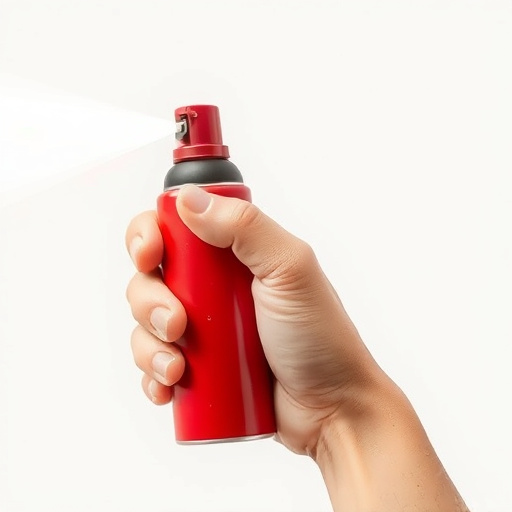Defensive pepper spray, leveraging capsaicin's irritant properties, offers vital self-defense in 2-5 meter (6-16 feet) range. Modern formulations balance potency with control to minimize bystander impact and residual effects while maintaining effectiveness within this distance. Understanding the defensive pepper spray distance range is crucial for maximizing personal safety and selecting the right pepper sprayer for individual needs.
“In today’s world, personal safety is paramount. One effective tool in an individual’s defense arsenal is defensive pepper spray, a chemical irritant designed to neutralize attackers temporarily. This article explores the strategic utilization of chemical irritants in personal protection devices. We delve into the science behind defensive pepper spray, its effectiveness, and range, while optimizing its use for maximum protection. Understanding the distance considerations ensures users can make informed decisions in critical situations.”
- Understanding Chemical Irritants: Their Role in Personal Protection Devices
- The Science Behind Defensive Pepper Spray: Effectiveness and Range
- Optimizing Defensive Pepper Spray for Maximum Protection: Distance Considerations
Understanding Chemical Irritants: Their Role in Personal Protection Devices
Chemical irritants play a crucial role in personal protection devices, particularly in defensive pepper spray. These substances are designed to cause discomfort and disorient the target, providing the user with valuable time to escape or defend themselves. Understanding chemical irritants is essential when considering their effectiveness as a self-defense mechanism. The active ingredients in pepper spray, such as capsaicin, create an immediate reaction by stimulating nerve endings, leading to temporary blindness, coughing, and difficulty breathing within a specific defensive pepper spray distance range.
In personal protection devices, the goal is to achieve a balance between potency and control. Modern formulations aim to minimize the impact on bystanders and reduce the risk of residual effects while ensuring the irritant remains effective against potential threats. The strategic use of chemical irritants in these devices can significantly enhance an individual’s ability to defend themselves in various situations, making them valuable tools for personal safety and security.
The Science Behind Defensive Pepper Spray: Effectiveness and Range
Defensive pepper spray, also known as oleoresin capsicum (OC) spray, is a powerful personal protection device designed to disable and deter aggressors. The science behind its effectiveness lies in the active ingredient—capsaicin, the same compound that gives chili peppers their heat. When sprayed, capsaicin irritates the eyes, nose, throat, and skin, causing the target to experience temporary blindness, difficulty breathing, and intense pain. This disruption is enough to enable the user to escape or gain help.
The defensive pepper spray distance range varies based on factors like the quality of the product, weather conditions, and application method. Typically, a well-made pepper spray can be effective from a range of 2–3 meters (6–10 feet). This distance ensures that the user remains safe while allowing for a tactical advantage in disarming or distracting an attacker. Understanding these parameters is crucial when selecting personal protection devices, as it directly impacts one’s safety and ability to defend against chemical irritants.
Optimizing Defensive Pepper Spray for Maximum Protection: Distance Considerations
When it comes to defensive pepper spray, understanding the optimal distance range for its effectiveness is key for maximum protection. The distance at which a person can effectively deploy pepper spray varies based on several factors, including the user’s proficiency, the sprayer’s design, and environmental conditions. Typically, most pepper sprays are designed to be effective within a range of 2-5 meters (6-16 feet). This distance allows for a tactical advantage, ensuring that the user can apply the spray while maintaining a safe distance from potential threats.
For optimal protection, it’s crucial to consider the defensive pepper spray distance range as a strategic element in personal safety. Deploying the spray at the right distance enables users to temporarily disable attackers, providing precious time for escape or backup arrival. Moreover, understanding this range helps individuals choose the most suitable pepper sprayer for their needs, be it a compact model for close-quarters combat or one with a longer reach for increased safety margin in open spaces.
Defensive pepper spray, with its proven effectiveness against aggressors, plays a vital role in personal protection devices. Understanding the science behind its irritant properties and optimizing its distance range ensures maximum safety. By considering factors like spray distribution and desensitization strategies, users can make informed choices to protect themselves in potential threat scenarios, making it an indispensable tool for personal security.
